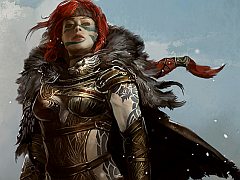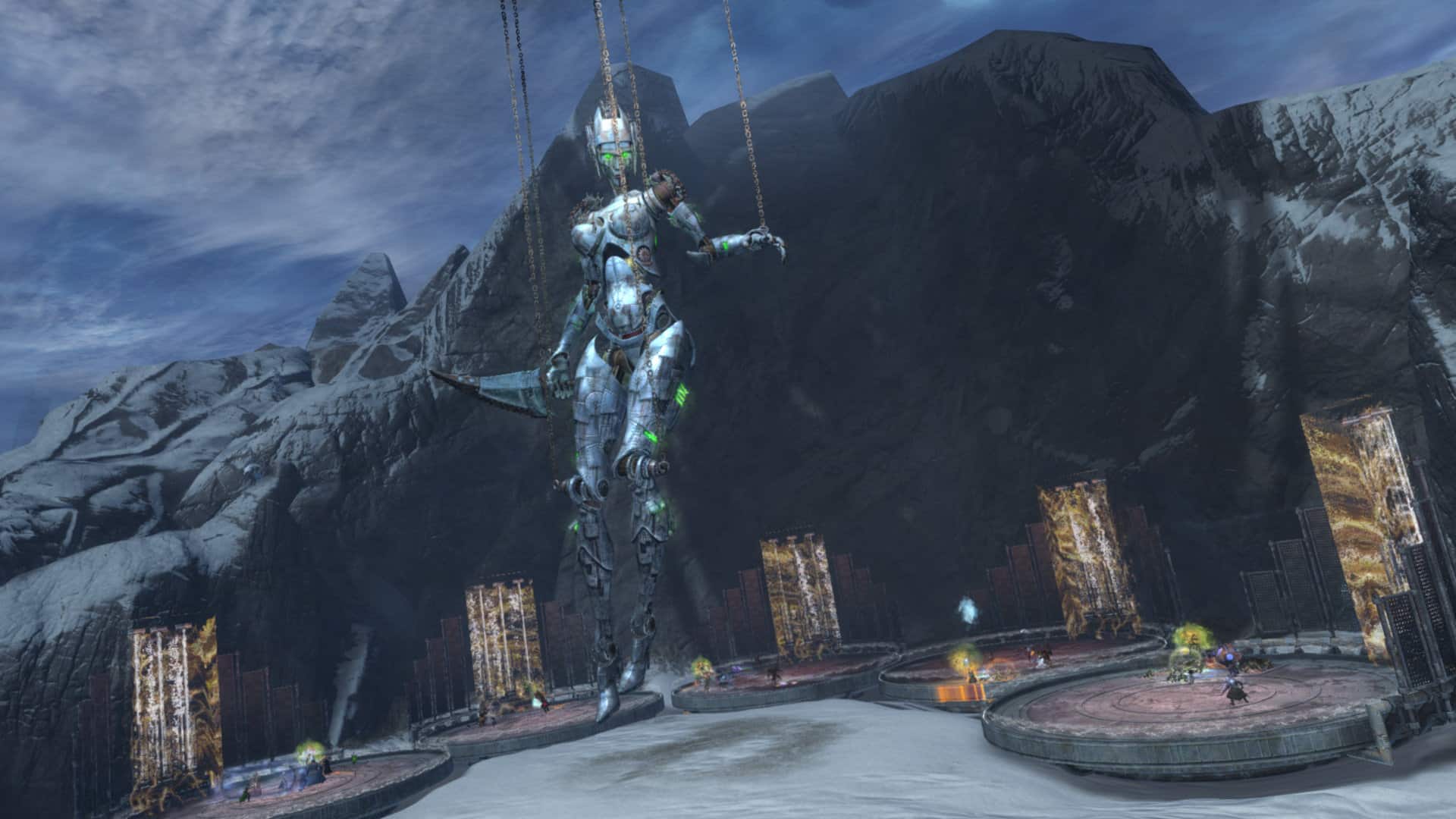You can trust VideoGamer. Our team of gaming experts spend hours testing and reviewing the latest games, to ensure you're reading the most comprehensive guide possible. Rest assured, all imagery and advice is unique and original. Check out how we test and review games here
The dark cloud hailing down on any MMO is World of Warcraft, which exists as the enormous, grind-inducing yardstick by which all other MMORPGs are measured. In fact, just reviewing MMOs almost always boils down to a basic fill-in-the-blanks scheme:
“X feature is a welcome inclusion to the genre, and I hope it catches on. Unfortunately as a whole, WoW is still better. Maybe WoW will steal X feature and use it, in addition to Y feature from Z game. That would be perfect.”
Guild Wars has been a bit of an exception. It’s an MMORPG developed to avoid the grind scenarios that have been status quo in the genre: WoW rung in a new golden era for the kind of slack-chinned tedium that came from having to kill 50 Kobolds consecutively, and GW sought to move away from that.
For instance, Guild Wars had an almost hilariously low level cap in the early days – 20 to WoW’s original 60 – and created a massively multiplayer environment that was largely based in instances. But Chris Lye, Guild Wars 2’s Global Brand Director, tells us how this didn’t really work in the game’s favour:
“We learned a few things when it came to instancing. We learned it’s a great way to do both custom storytelling and encounters that are focussed just around your group. But we noticed that one of the things we were losing, because we didn’t have the persistence, was the social glue and cohesion that you get from having a continually persistent world. Without persistence you can never really deliver that whole feeling of a virtual world. We had a sense of community in our outposts, and as soon as we got beyond the outpost in the instance areas you were alone. There was a dramatic change you were suddenly aware of. You’d have hundreds of people in the outpost area and then suddenly you’re alone. A persistent experience would expand that out so we’d have the feeling across the entire game.”
Guild Wars 2 is an attempt to find a different route around the social problems that leaking out of GW1 since its release, and one of the primary ways of remedying the social side of Guild Wars comes from the newly implemented Dynamic Events.
Where a traditional quest system will have you wander over to the nearest NPC with an exclamation mark, then force you to read a wall of text to find your objective, Dynamic Events happen instantly and without real warning. A dragon will attack an area outside a nearby town and the villagers about town will suddenly be bricking it. You’ll hear screaming and spot guards trying to recruit the help of players. Buildings will suddenly explode into flame as the dragon spits fire and from a distance you’ll see the clouds of smoke billowing out on the horizon.
Don’t fancy fighting? That’s fine. Go ahead and pick up that keg of water next to a barn and begin to put out the flames that have taken over the farmyard. Not bothered with that either? Then head down to the fight and help revive any fallen players. Lye tells us:
“We’re encouraging people to interact, not penalising you for helping each other out. And the fact that every profession can revive is a huge bonus, that’s a great piece of social rewarding. People want to revive because it’s not a lot of work and you actually get experience for doing that.”
Even the basic movement mechanics feel looser. Dodge has been implemented into fights, allowing you to dive and roll out of the way of incoming attacks. Hell, now you can actually freely jump and swim – in previous iterations players had been locked to the ground, unable to mindlessly skip around.
But the most notable shift for the series is how they’ve implemented a storyline into the MMO format. Their catchphrase as Lye tells us is “putting the RPG back in MMORPG”, referencing the idea that the genre has been purged of any legitimate story-telling.
“The idea that we feel is missing from MMORPG is the RPG element: the idea of being able to create a unique player experience and a replayable experience. It comes down to a question of why people play RPGs in the first place. Some people do it for camaraderie or the combat, but some people definitely see it as a form of exploration. ‘I want to have more expression’, ‘I want to have an alter ego’, and ‘I want to be a hero’. What would that feel like? But, when it’s hopelessly generic, you just become heroic character X and that takes away from the experience. And that’s why having an RPG that gives you real choices and real experience, some of which are not black and white, speaks to that audience.”
The game opens with a character screen that allows you to choose from a small handful of character traits and character backstories. You’re the one that came from the street, you’re the one that watched their sister die, you’re the one that failed to get into a circus. Design your character to be a miserable hard-ass and NPCs will act accordingly. Walk through the street and kids will take one look at you and run in the other direction. But your persona isn’t entirely determined by the character editor. As you go up in level you’ll see the Vigil, a military order in the game that you can join which will set you on a different path according to the nature of the order you’ve chosen.
Even the system for chatting with NPCs has more meat to it. Where you’d traditionally head over to a NPC to accept or reject his quest, you’ll now take part in extensive conversations based around proper dialogue trees.
Like the original, Guild Wars 2 is free to play. “In Guild Wars 1 we had an in-game store where we featured microtransactions” Lye says, “With each introduction of microtransactions we’d get feedback from players with what they’d consider worthwhile, and we’ve taken that learning into GW2. But effectively the business model is the same: buy the game, play for as long as you like online and, yes, there are microtransactions in store.”
The business model has been a hell of a step forward for a large-scale Western MMO, but the inclusion of a meaningful player-driven storyline is nearly as significant a leap in the genre.
“MMOs are very daunting projects – they are very expensive, they require large teams, large bank books and I imagine people want to minimise the risk as much as possible. [Many developers will] look at a gameplay model that is tried and true that has existed for years, like back to MUDs . And we didn’t want to stick to that in the way that so many other MMOs have been stuck in that rut for so long. We’re gamers, we play a variety of games and we didn’t approach Guild Wars as ‘we’re designing an MMO’. We took it from the standpoint of ‘we’re designing a game’. So you see components and say ‘wait a minute; that looks like something from an action game’, ‘that looks like something from a RTS’ – we’re trying to see how these aspects can be brought into the MMO space.”
Guild Wars 2 is due for release on PC in 2011.
Guild Wars 2
- Platform(s): macOS, PC
- Genre(s): Adventure, Fantasy, Massively Multiplayer, Massively Multiplayer Online, RPG

/https://oimg.videogamer.com/images/8656/guild_wars_2_19.jpg)
/https://oimg.videogamer.com/images/4ade/guild_wars_2_18.jpg)






